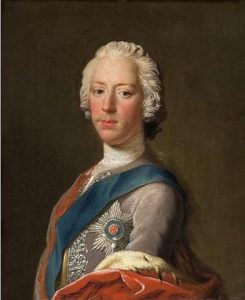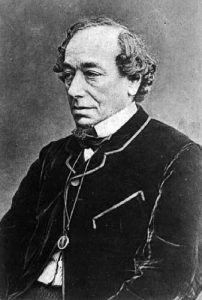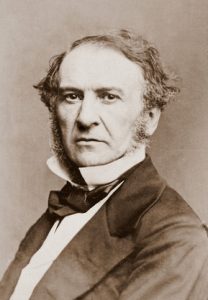Brunelleschi’s Dome
The architecture book is done. While I was working on it, I wouldn't have said it was fun. (My Own True Love will corroborate this.) I put in a lot of late nights. I struggled to find a simple way to describe how an arch works.* But along the way I re-read some old favorites, I looked at some gorgeous pictures, I learned some new stuff, and found a book that I want to share with you.
Brunelleschi's Dome: How A Renaissance Genius Reinvented Architecture by Ross King combines biography, art history, and clear writing about thorny technological issues to tell the story of how Fillipo Brunelleschi solved a long standing architectural conundrum.
Begun in 1296 by Arnolfo de Cambio, Florence's cathedral was under construction for 150 years. It was 1418 before the council responsible for constructing the cathedral approved a plan for completing the huge dome that tops the cathedral. The original design called for an enormous dome built using stone rings buried in its masonry rather than external buttresses. The ideal was a dome that would rise above the cathedral with no visible means of support, like the Roman Pantheon.
The man who won the competition, Filippo Brunelleschi (1377-1446), was a goldsmith by training, like many other Renaissance artists and architects, including Michelangelo. Brunelleschi had spent years measuring classical Greek and Roman monuments; he used those lessons in designing the Duomo.** Renaissance Florence being what it was,*** he also got in pissing matches with other Florentine architects and the powerful mason's guild, which had him arrested for not paying his annual dues.
Whether you're interested in architecture, the Renaissance, geniuses, or just a well-told story, I recommend Brunelleschi's Dome. In fact, I enjoyed it enough that I intend to take it on our trip to Florence this fall and re-read it, without the pressure of writing 250 words about building the Duomo.
*Actually, how an arch works wasn't so bad. How a solar panel works? Yikes!
**In addition to his work on the Duomo, Brunelleschi is known for rediscovering the science of perspective, which allows artists to draw three-dimensional objects on a two-dimensional page.
***That is to say, genius, scandals, corruption, politics and poisons--not to mention the Medici.
Photo courtesy of Fczarnowski via a Creative Commons license on Wikipedia.
Road Trip Through History: Gettysburg National Military Park
Our recent trip to Gettysburg was a blast, and not just because I love to stand up in front of a crowd and talk about something I'm interested in.
If you get a chance to visit Gettysburg National Military Park during the annual Sacred Trust event,* take it. The event is well-organized. Speakers start and stop with a military precision that the commanders at the battle would have envied. More important, the organizers choose speakers on a broad range of topics. Some of the talks are what I think of as technical military history: the nitty-gritty of battles and troop movements. But history buffs who are not particularly interested in descriptions of troop movements will also find subjects of interest. This year's program included talks on
• Charles Anderson, the poor schmuck who spoke after Lincoln
• Whether Robert E. Lee actually committed treason
• The relationship of Nat Turner's slave revolt to the Civil War three decades later
• A history of Gettysburg as a park
• The transformation of American medicine as a result of the war
• Some nerd talking about Civil War nurses--who would have thought?
(Makes you wish you'd been there, doesn't it?)
Even if you can't get to Gettysburg for the Sacred Trust, the park is well worth a visit. Here were some of the things I recommend:
1. Hire a battlefield guide. Official battlefield guides are more than just local fanatics. They are local fanatics who have been trained, tested, and licensed by the park service. Each one approaches the story a little differently. Most will ask you if there is something in particular that you're interested in. A two-hour tour is $65 for a carload of one to six people, plus a tip. And a bargain at the price.
2. The excellent film, A New Birth of Freedom, narrated by Morgan Freeman. One of the things that impressed me most about the film (as well as audio portions in the museum) is that they didn't give in to the temptation to have Freeman read Lincoln's lines. Instead Lincoln's words were spoken by an actor who gave him the authentic thin, twangy sound that made cultured Northeasterners grind their teeth when he first opened his mouth. My favorite line from the film? "Freedom, like power, is never uncontested."
3. The cyclorama! I've written about the Gettysburg Cyclorama before, but I'd never seen it. No photograph can do it justice. The restored painting is amazing as it stands. Combined with light and sound, the experience is astonishing. The figures appear three-dimensional and the smoke, painted with flecks of tinsel, seems to move.
4. The museum does an excellent job of placing the battle in the larger context of the war: from the build up to the war through to its aftermath. The curators have chosen wonderful images and great quotations to illustrate their points. I love the way they use blue and grey throughout the exhibition, giving the viewer a subtle clue as to whether a particular point deals with north and south. But I did not linger. In part because there was lots of competing audio and video, which I find physically unpleasant. But in part because I've been immersed so deeply in the Civil War for the last year that it was too familiar to hold my interest.** My guess is I'd have gone through it more thoroughly if I'd been there two years ago.
5. If you're at Gettysburg on a summer weekend, take the shuttle bus to the George Spangler Farm Civil War Hospital, which is run by the Gettysburg Foundation in conjunction with the park. The Foundation hosts reenactment groups and offers living history programs on both civilian farm life at the time of the war and the realities of Civil War medicine.
Gettysburg National Military Park, and in fact all of the National Battlefields and National Military Parks I've visited over the years, commemorate war without romanticizing it. As should we all.
*Scheduled each July to coincide with the anniversary of the battle.
**I keep thinking I'll set the subject down for a while, but it just keeps nudging me. If you're suffering from Civil War fatigue, Dear Readers, please let me know.
Choosing (Historical) Sides
Recently a friend of mine texted me from Culloden in Scotland*--the battlefield where the Duke of Cumberland routed Bonnie Prince Charlie's Jacobite forces and effectively ended the Jacobite cause. (Charles was later involved in a half-hearted French plan to invade England in 1759, but it came to naught.) She wanted to know if I wanted a Jacobite blue bonnet.
- William of Orange (aka William III)
- Bonnie Prince Charlie
My answer--which didn't surprise her--was no. Despite the fact that the exiled Stuarts clearly had the better legal right to the throne, I've always had a soft-spot for that hard-working sober-minded prince, William of Orange. And I've never had much use for Bonnie Prince Charlie--who I've always thought of as a putz rather than a failed romantic hero. (If you have strong opinions on the subject, feel free to yell at me in the comments below.)
Karin's offer of a Jacobite blue bonnet led me to think about the fact that history buffs tend to chose sides. Sometimes it is because we agree with one side's political position. Sometimes it's because we have a family connection to one side of a conflict or a vested interest in the outcome. Sometimes it's simply a question of who won. (Though Lost Causes also have their supporters.***)
And sometimes it simply comes down to preferring one historical figure over another. In my graduate school days, classes on Victorian England quickly divided themselves into two camps on the question of who was the greatest Prime Minister of the nineteenth century, Benjamin Disraeli or William Gladstone. The members of Team Disraeli and Team Gladstone all had good solid arguments supporting their guy, but when you pushed them it eventually came down to a question of personality.****
- Benjamin Disraeli
- William Gladstone
Choosing sides isn't necessarily a bad thing, as long as you realize you have a preference. In the end, no one writes objective history.
So tell me, oh Marginalia, what historical sides have you chosen and why?
*Not quite as exciting as the time she called me from Tipu Sultan's palace at Seringapatam.** While I occasionally grumble about feeling like my cell phone is a leash, there is something pretty cool about getting instant communication from far flung historical sites.
**Checking back for an old post to link to, I discover that while I have written about Tipu's Tiger here on the Margins I have not yet written about Tipu. An oversight that will be rectified.
***Which brings us back to Bonnie Prince Charlie. I have to give the man credit for persistence.
****Me? I vote for Robert Peel. Call me contrary.






